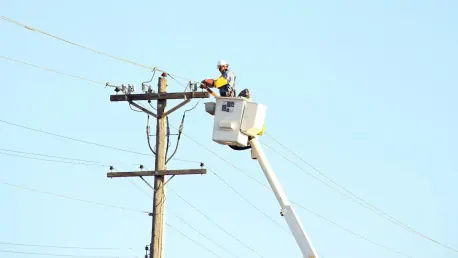The aftermath of hurricanes Helene and Milton has left several regions grappling with significant wireless and wireline connectivity issues. As residents in affected areas strive to restore normalcy, network providers are working tirelessly to reinstate communication channels. This article provides an insightful look into the recovery efforts, challenges, and innovative solutions deployed by carriers like T-Mobile US, AT&T, and Verizon.
The Extent of Service Outages
North Carolina and Tennessee
In North Carolina and Tennessee, the impact of hurricanes Helene and Milton has been profound, with 7.2% of service sites still out of operation. The mountainous terrain has proved particularly challenging, complicating access to damaged infrastructure such as washed-out roads and bridges. Repair crews face a daunting task as they work to restore connectivity in these hard-hit regions. The geographical barriers make it difficult for technicians to reach certain sites, exacerbating the delay in restoration efforts.
The situation in North Carolina is further exacerbated by extensive fiber damage. Restoration teams are exploring alternative solutions for backhaul connectivity to maintain communication lines. While some progress has been noted, the road to full recovery remains convoluted. The widespread destruction of essential infrastructure means that even when crews can access sites, they often encounter severe damage that requires substantial time and resources to repair. Efforts to mobilize equipment and personnel are hindered by the challenging terrain, making the process laborious and time-consuming.
Florida
Conversely, Florida shows more encouraging signs of recovery. Following significant restoration efforts, the Federal Communications Commission (FCC) deactivated disaster response reporting, reflecting improved conditions with only about 2% of service sites still down. This progress underscores the effectiveness of coordinated recovery strategies in the state, highlighting the efficiency of well-executed disaster response plans. The relatively flat terrain and robust infrastructure of Florida have supported quicker recovery compared to more mountainous regions.
However, the journey hasn’t been without its hurdles. Initial response teams faced severe infrastructural damage, which necessitated a swift and robust deployment of resources. Nonetheless, the advances made signal a positive trajectory towards full restoration. Teams had to overcome logistical challenges and coordinate with local authorities to prioritize areas most in need, ensuring that critical services were restored as quickly as possible. The reduced impact on Florida’s telecommunications infrastructure compared to other states allowed for more focused and efficient recovery efforts, aiding in the state’s swift return to near-normalcy.
Carrier-Specific Responses
T-Mobile US Initiatives
T-Mobile US has been at the forefront of recovery efforts, particularly in Florida, where less than 2% of its customers are experiencing connectivity issues. The carrier has conducted nearly 1,000 site assessments and deployed or refueled over 600 generators to ensure uninterrupted service during the recovery phase. Pinellas, Hillsborough, and Volusia counties remain focal points of their operations. These measures demonstrate T-Mobile’s commitment to not only restoring but also maintaining connectivity throughout the recovery process.
To address the ongoing disruptions, T-Mobile is also considering the use of portable satellite dishes and microwave equipment. These technologies offer temporary yet effective solutions to maintain service continuity while permanent repairs are underway. The use of such advanced technologies highlights the carrier’s proactive approach in tackling immediate issues while planning for extensive, long-term solutions. By deploying these technologies, T-Mobile aims to bridge connectivity gaps and ensure that their customers experience minimal disruption during this challenging period.
AT&T’s Technological Edge
AT&T has leveraged advanced technologies in its recovery efforts, responding to 30 requests for FirstNet deployable assets. A notable innovation is the aerial Cells on Wings, or flying COWs, which provide critical connectivity in areas where traditional infrastructure remains compromised. This deployment is particularly beneficial in inaccessible regions, ensuring that essential communication lines remain operational. AT&T’s strategic use of these aerial solutions underscores the importance of flexible and adaptive technologies in disaster recovery scenarios.
AT&T’s commitment extends beyond technological solutions. In North Carolina, the carrier has established a Mobile Connectivity Center, offering residents the opportunity to charge devices and access computers. This initiative underscores AT&T’s dedication to community support during the recovery period. By providing these essential services, AT&T not only helps facilitate communication but also ensures that residents can stay connected with loved ones and access critical information. This dual focus on technology and community highlights a comprehensive approach to disaster recovery.
Verizon’s Dedication to Restoration
Verizon’s recovery strategy combines financial support with technological deployment. The company has donated $2 million for relief efforts, reflecting its commitment to aiding affected communities. This significant financial contribution complements the company’s operational endeavors. On the operational front, Verizon continues to refuel generators, ensuring that site operations remain functional despite ongoing challenges, demonstrating a steadfast commitment to network stability.
Verizon engineers are working persistently to restore network performance to pre-storm levels. Their efforts highlight the intricate and labor-intensive nature of the recovery process, emphasizing Verizon’s resolve to overcome the disruptions caused by the hurricanes. The carrier’s methodical approach to refueling generators and focusing on infrastructure repairs reflects a well-coordinated effort to expedite the recovery process. Verizon’s dual focus on financial aid and technological resilience signifies a balanced strategy that addresses immediate needs while building long-term stability.
Community and Industrial Recovery
The Role of Quartz Mining in North Carolina
In Spruce Pine, North Carolina, the local economy heavily relies on high-purity quartz mining, crucial for semiconductors and fiber optics. Companies like Sibelco have restarted operations, contributing significantly to economic recovery in the region. Sibelco CEO Hilmar Rode commended the resilience of employees and the community, acknowledging the extended path to full recovery. The resumption of quartz mining operations marks an essential milestone in the broader recovery efforts, supporting both local industries and the global supply chain.
The essential role of high-purity quartz in telecommunications extends beyond local economic benefits. As these materials are vital to the production of semiconductors and fiber optics, the restoration of mining operations ensures that the broader industry’s supply chain remains robust. The community’s return to operational capacity in quartz mining signifies not just local resilience but also a step towards stabilizing global technological infrastructure affected by these natural disasters. The ongoing support and efforts by companies like Sibelco bolster both local recovery and the sustainability of crucial global industries.
TQC and Supply Chain Resilience
Another major supplier in the region, TQC, is still in the process of evaluating its return to full operations. However, the company remains optimistic about meeting the demand due to prior strategic supply chain planning during the COVID-19 pandemic. This foresight has provided TQC with a buffer, allowing for a more measured and manageable recovery process. Their experience from previous disruptions has enabled them to implement robust strategies aimed at maintaining stability even amidst significant infrastructure challenges.
TQC’s resilience is partly attributed to its diversified supply chain and advanced planning, which have allowed it to navigate the complexities posed by the hurricanes more effectively. This preparedness highlights the broader importance of strategic planning in disaster-prone industries. TQC’s confidence in their planning underscores the importance of preemptive measures and adaptability in ensuring that operations can resume swiftly and efficiently following unforeseen disruptions. This example serves as a valuable lesson in crisis management for other industries facing similar challenges.
Community Impact and Support
The aftermath of hurricanes Helene and Milton has left numerous regions struggling with major disruptions to both wireless and wireline connectivity. As residents in these devastated areas work to return to normalcy, network providers are putting in relentless efforts to restore vital communication channels. This article offers an in-depth look at the extensive recovery endeavors, the various challenges faced, and the innovative solutions being implemented by major carriers such as T-Mobile US, AT&T, and Verizon.
In the wake of these natural disasters, the ability to communicate is crucial. Cell towers have been damaged, and fiber optic lines have been severed, leaving thousands without basic communication services. Network providers have deployed teams around the clock to repair, replace, and upgrade infrastructure where necessary. These carriers are leveraging advanced technology like portable cell sites and drones to expedite the process.
While the path to full recovery is challenging, these companies are committed to providing resilient and long-lasting solutions that will not only restore current services but also enhance future reliability.









